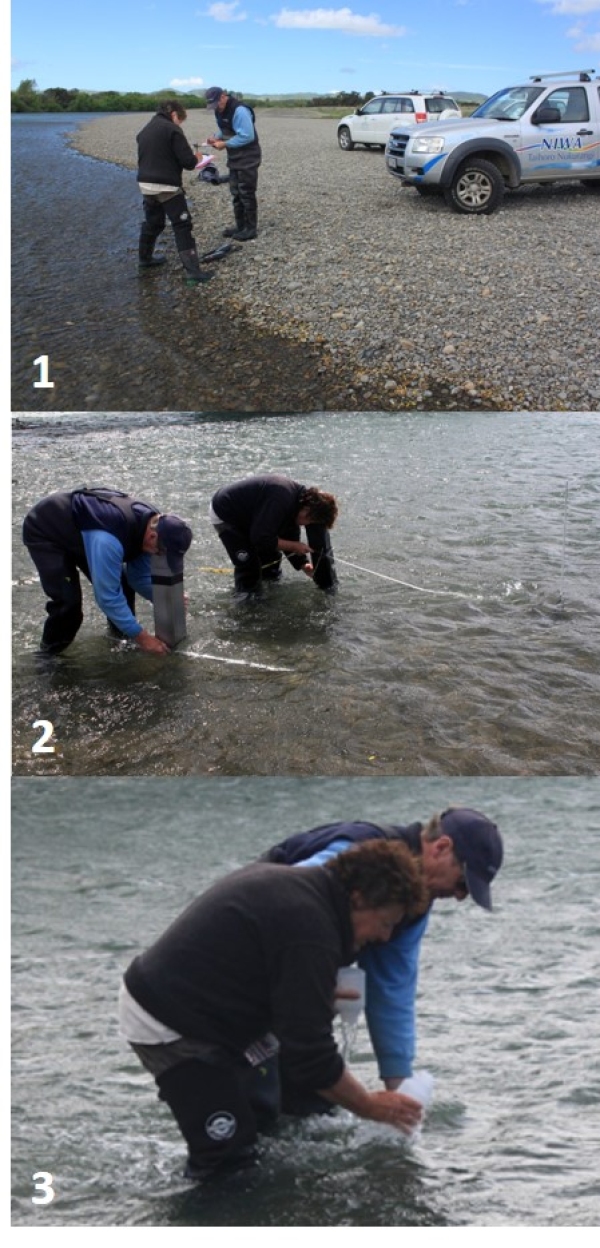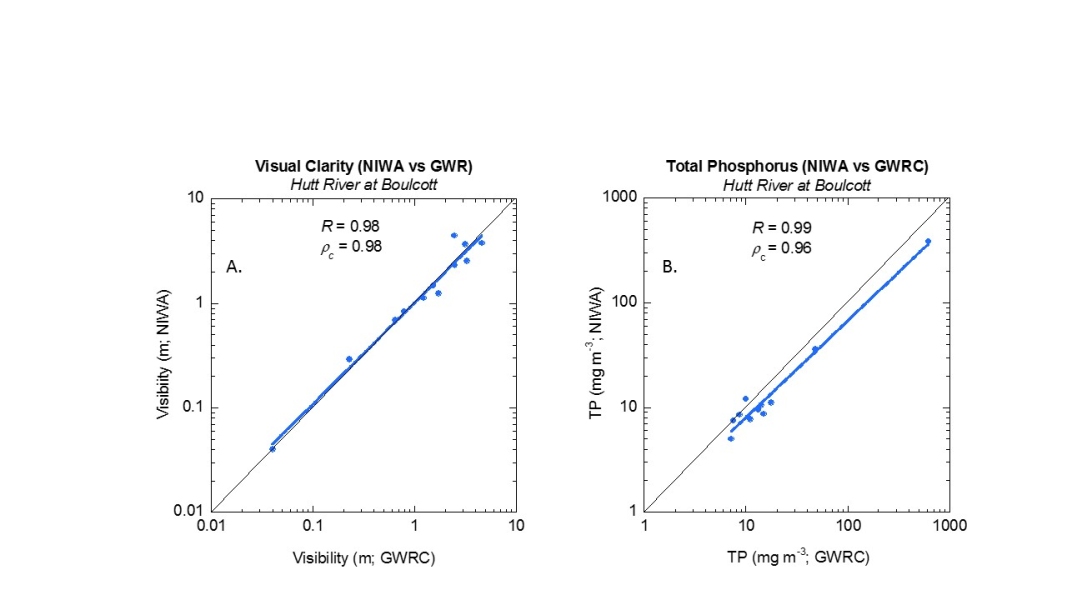Inter-agency comparisons of river water quality in the Wellington region: a pilot for a national quality assurance programme.
Take our quick Freshwater and Estuaries Update reader survey
State of the environment (SoE) reports should be supported by a national quality assurance (QA) programme to establish the “reliability” (accuracy) of water quality data.
One valuable method to assess reliability is to compare the measurements made by different agencies, each of which samples the same water mass independently. NIWA and Greater Wellington Regional Council (GWRC) researchers are piloting a national QA programme in the Wellington region. Field technicians from each organisation are simultaneously sampling river waters:
- every two months at the same site, and
- every year at a diverse range of regional SoE sites.
Measurements by each organisation will be compared using X-Y plots to see how closely the data matches. Close matches are strong evidence for overall accuracy, not only for the sites(s) of comparison but for all such SoE sites in the region. Outliers, consistent bias, or ’noise’ (lack of precision) will be investigated further so that the causes can be diagnosed and efforts made to improve the agreement.
The first comparison was conducted at the Ruamahanga River at Waihenga on 21 October 2015 (Photos 1 to 3). Field measurements included black disc visibility and water sampling taken side-by-side, to make sure the same water mass was measured.
Example results with parallel NIWA and GWRC data obtained independently at the Hutt River at Boulcott in 2014 are shown in Figure 1. The parallel sampling was designed to ensure data continuity at this regional SoE site (a former NRWQN site).
We expect that such inter-agency comparisons will increasingly be used in the future as evidence of (ongoing) water quality data reliability, and summarised in regional and national SoE reports.
Go back to Freshwater Update 68



